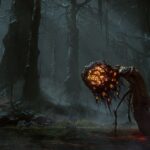Reflecting on an Honest Depiction of Growing Up in the ’90s
There is a certain authenticity in the portrayal of a lonely, fantasy-obsessed child in the 1990s in "I Saw the TV Glow" that resonates deeply. This sentiment holds true regardless of whether the viewer, like writer/director Jane Schoenbrun, was a fan of "Buffy the Vampire Slayer."
Exploring the Mind-Bending Story of "I Saw the TV Glow"
The narrative of the film revolves around Owen (Justice Smith) and Maddy (Brigette Lundy-Paine), two outsiders who form an unlikely bond over their shared affection for "The Pink Opaque," a fictional fantasy/horror series reminiscent of a blend between "The Adventures of Pete & Pete" and "Are You Afraid of the Dark?" Schoenbrun’s homage to "Buffy" is evident throughout the film, with themes of queer theory interwoven to delve into the concept of self-identification through fiction.
Embracing Queerness in ’90s TV Shows
In a recent conversation, Schoenbrun expressed the desire for "I Saw the TV Glow" to embody a queerness that was subtly present in many ’90s TV series. Despite networks often shying away from overt representations of queerness, Schoenbrun believes these shows played a pivotal role in helping a generation of queer individuals recognize themselves.
Nostalgia and Self-Discovery Through "Buffy"
The film protagonist’s reflections on the impact of "Buffy" shed light on the struggle of embracing one’s identity in a societal context that often fosters shame and judgment. The exploration of the term "becoming" as a replacement for transition resonates with themes of continual self-evolution and growth.
Unveiling the Queer Subtext of "Becoming"
Through a queer lens, the pivotal moments in "Becoming" reveal layers of self-discovery and acceptance, with resonant themes of alienation and empowerment. The memorable sword fight between Buffy and Angel symbolizes a profound affirmation of self amid isolation and adversity.
A Dual Perspective on Self-Discovery in Media
The characters Owen and Maddy in "I Saw the TV Glow" symbolize different facets of self-realization, mirroring Schoenbrun’s personal journey of self-discovery and transition. Through their friendship, the film explores the complex interplay between embracing one’s true identity and the fear of societal judgment.
Evolving Interpretations of Childhood Favorites
The evolution of "The Pink Opaque" in the film mirrors the way individuals perceive beloved childhood shows differently as they mature. Schoenbrun’s emphasis on the relationship between realism and artifice in storytelling adds depth to the exploration of memory and personal growth.
The Vision for a Screen Trilogy
Schoenbrun’s cinematic projects, "I Saw the TV Glow" and "We’re All Going to the World’s Fair," serve as the foundation for a larger narrative exploring themes of transition and self-acceptance. The upcoming installment in the Screen Trilogy promises to delve deeper into the complexities of identity and the convergence of reality and fiction.
Embarking on a Journey of Self-Exploration
As the Screen Trilogy unfolds, viewers are invited to contemplate the intersection of spectatorship and identity, grappling with feelings of detachment and dysphoria. The closing gap between self and screen represents a profound quest for authenticity and personal growth.
A Glimpse into the Future of the Trilogy
Schoenbrun envisions "Public Access After World" as the culmination of their narrative journey, akin to an epic saga mirroring the scope of beloved franchises like "Buffy" or "Harry Potter." The trilogy promises a rich tapestry of characters and storytelling that transcends traditional boundaries of reality and fantasy.
Embracing the Visual Medium
While the ultimate medium for the Screen Trilogy remains undecided, Schoenbrun harbors hopes of bringing their vision to life through visual storytelling. The journey towards adaptation is a testament to the transformative power of storytelling and the ongoing quest for self-expression.
Citations:
- Queer Geek Theory, link: queergeektheory.org
- Eve Kosofsky Sedgwick, link: queertheoryvisualculture.wordpress.com





